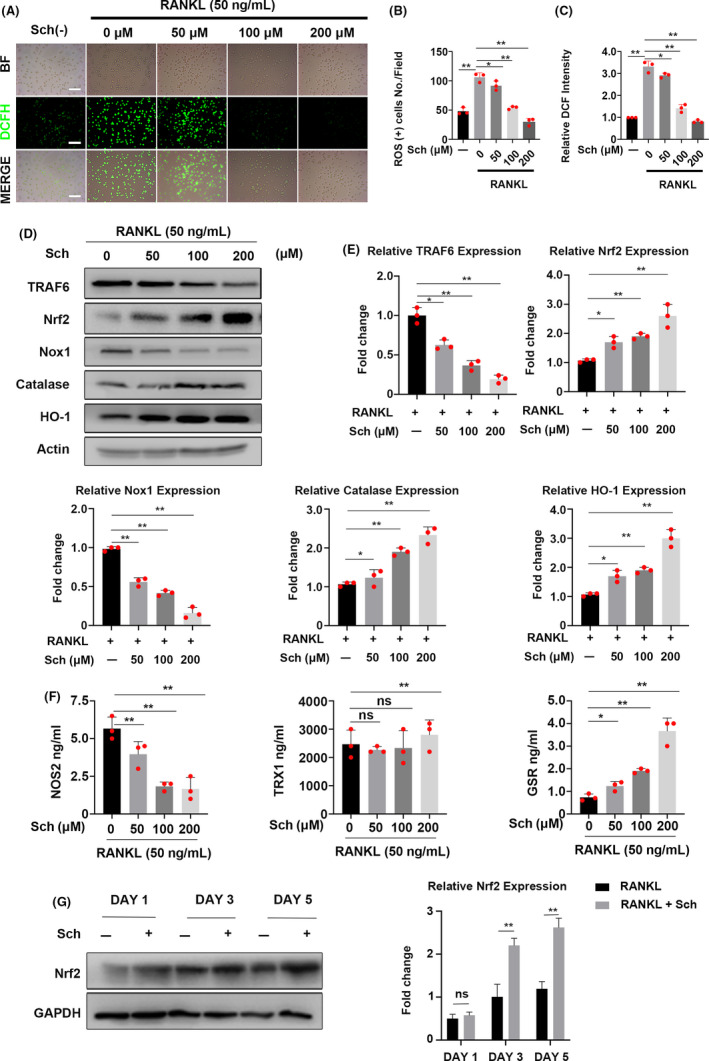FIGURE 5.

Sch reduces RANKL‐induced ROS production on osteoclastogenesis by down‐regulating TRAF6/Nox1 signalling pathway and enhancing the expression of Nrf2. A, Representative images of RANKL‐induced ROS generation in BMMs with or without pre‐treatment of Sch at different concentrations. DCFH‐DA staining was used to detect the intracellular ROS level. BF, bright field; DCFH‐DA, 2’,7’‐dichlorofluorescin diacetate; Scale bar = 200 μm. B, Quantification of the number of ROS‐positive cells per field (n = 3). C, Quantification of relative DCF fluorescence intensity averaged on cells of each well (n = 3 per group). D, Western Blot images of the effects of Sch on TRAF6, Nrf2, Nox1, catalase and HO‐1 expression. BMMs were stimulated by RANKL (50 ng/mL) in the absence or presence of Sch (0, 50, 100, 200 μmol/L) for 2 d, and then, proteins were harvested for Western blot. E, Quantification of the fold change of band intensity from each band relative to actin (n = 3 per group). F, BMMs were pre‐treated in different concentrations of Sch for 24 h with 50 ng/mL RANKL. Levels of anti‐oxidant enzymes in osteoclast culture following Sch treatment were analysed by ELISA. G, BMMs were co‐cultured with Sch 200 μmol/L at indicated day. Total protein of BMMs was harvested to test the Nrf2 expression. Sch enhanced Nrf2 expression. The data are shown as means ± SD. ns, no significance. *P < .05, **P < .01
